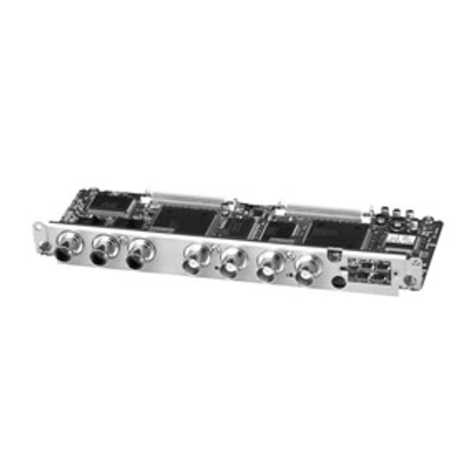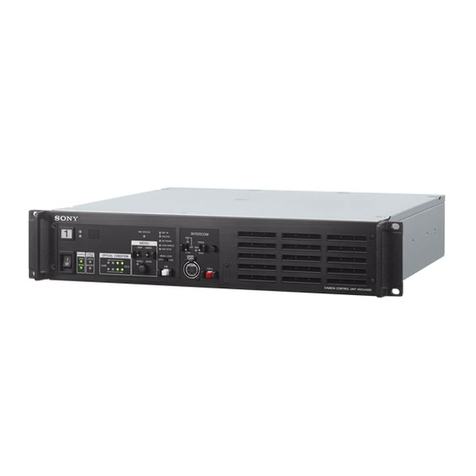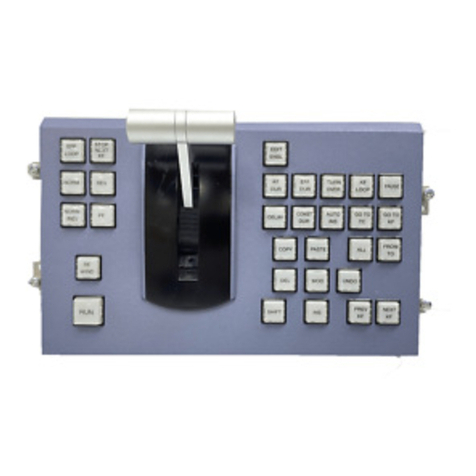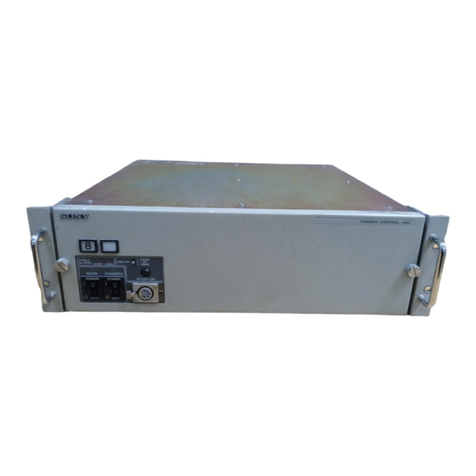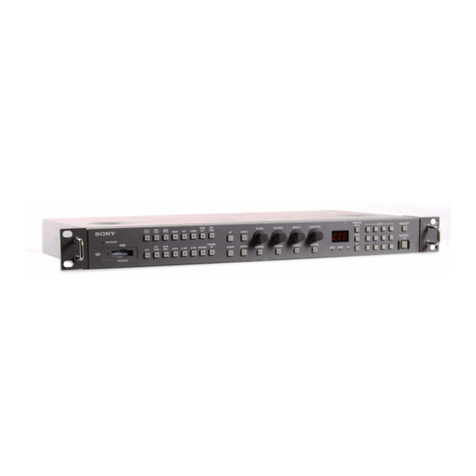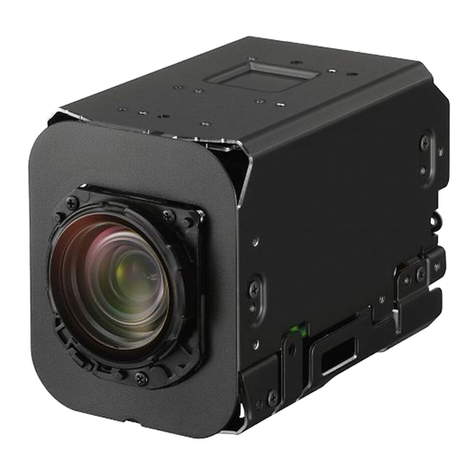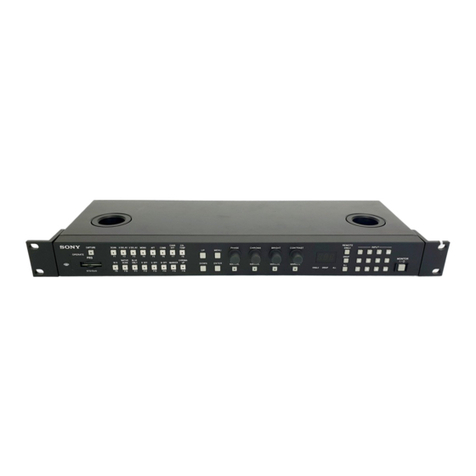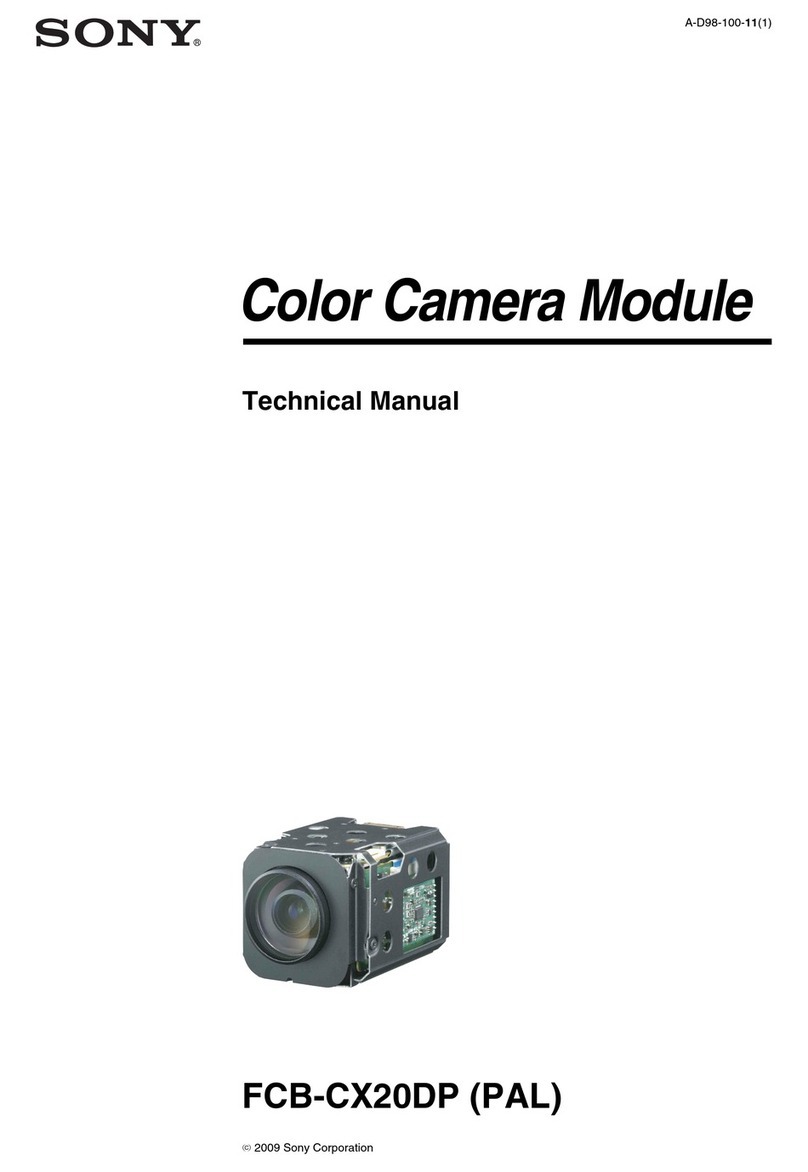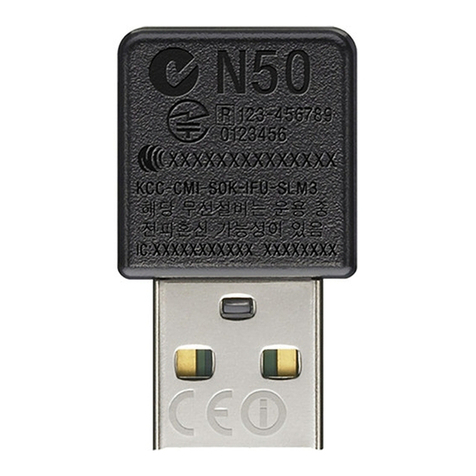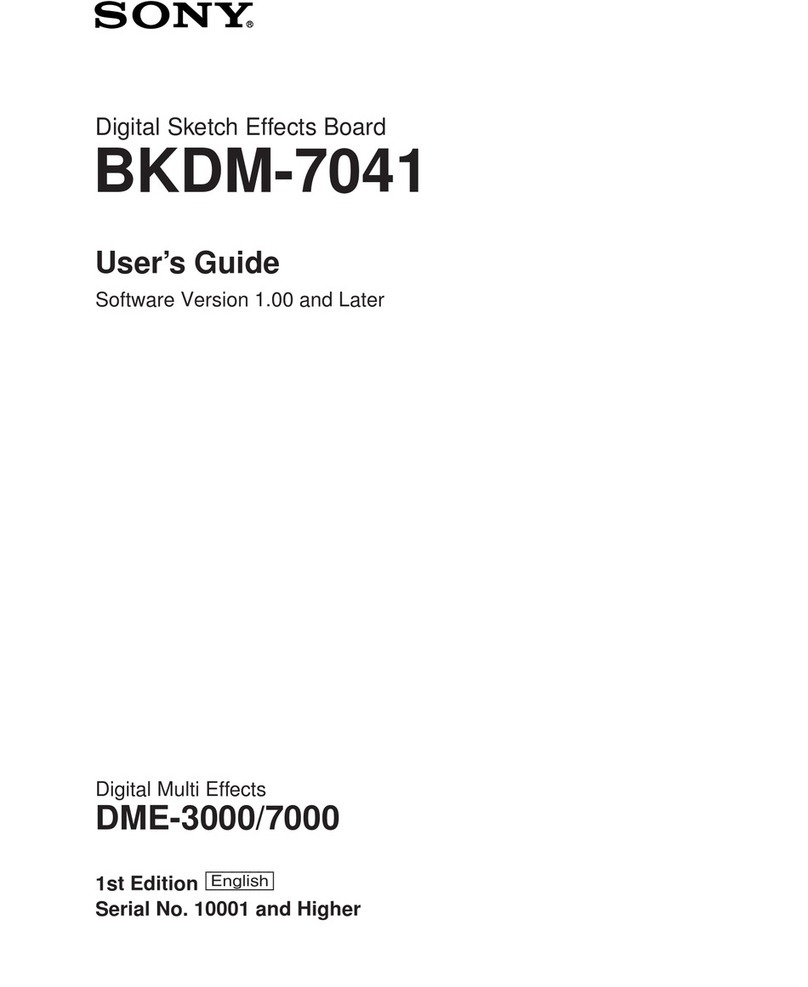
7
dSDI OUT (3G/HD/SD-SDI output) 1/2/3/4 connectors
The signal from the video camera may be output as four 3G-
SDI signals, HD-SDI signals or SD-SDI signals. They can
output signals with superimposed text characters and
markers.
For details on settings, contact a Sony service or sales
representative.
eNETWORK TRUNK connector (RJ-45 8-pin)
Used to connect the NETWORK TRUNK connector of the
device connected to the camera with the network connection
device.
fLAN-COM connector (RJ-45 8-pin)
Used to connect to a LAN. Connect a LAN hub (10BASE-T/
100BASE-TX), using a LAN cable (shielded type of category 5
or more).
gSDI RET (3G/HD/SD-SDI return video input) 1/2/3/4
connectors (BNC-type)
Four different 3G/HD/SD-SDI return video input signals may
be received independently. The selection of RET 1 or 4 is
made by the return switch of the video camera. The aspect
ratio can also be selected for an SD signal.
The type of input signal on RET 1 to 4 may be set individually
using the setup menu, or using the MSU-1000 series Master
Setup Unit.
For details on the setup menu, contact a Sony service or sales
representative.
Refer also to the Master Setup Unit manual.
hCHARACTER (character output) / AES/EBU connector
(BNC-type)
CHARACTER: Outputs the self-diagnostic results or setup
menu of the unit as an SD analog video signal.
AES/EBU: Outputs the AES/EBU format digital audio signal
that is input to the video camera.
iRCP/CNU connector (round 8-pin)
Used to connect to an MSU-1000 series Master Setup Unit,
CNU-700 Camera Command Network Unit, or RCP-1000
series Remote Control Panel via a CCA-5 Connection Cable.
Control signals are sent and received via this connector. When
using an RCP-1000 series unit, power is also supplied.
jTRUNK connector (round 12-pin)
Used to connect to the CCU connector on a camera via an RS-
232C or RS-422A interface. Communication with up to two
channels is available.
kExpansion board mounting port
Reserved for future use.
lCAMERA FIBER connector (optical fiber connector)
Used to connect a video camera, using an optical fiber cable.
All video camera signals, including power supply, control,
video, and audio, are sent and received over one optical fiber
cable.
Dust on the connection surface of the optical fiber cable may
result in transmission errors. When not connected, always
cover the end of the connector with the supplied cap.
m~ AC IN (AC power input) connector
Use the specified AC power cord to connect to an AC power
supply. The AC power cord can be secured to this unit, using
the plug holder (optional).
nINTERCOM/TALLY/IO PORT (intercom / tally / input/
output) connector (D-sub 50-pin)
Used to input and output intercom, tally, and program audio
signals. Connect to the intercom/tally/program audio
connector of the intercom system.
REAR PREVIEW function: 10-pin is assigned for the output
pin of the REAR PREVIEW function.
oREFERENCE IN/OUT connectors (BNC-type)
Input an HD tri-level reference sync signal or SD reference
signal (black burst signal, or black burst signal with 10Field ID)
to the RET IN connector.
The input signal is output from the RET OUT connector as is
(loop-through output). When not using loop-through output,
terminate the unused connector at 75 ohms.
When a sync signal is not input to the RET IN connector, an
SD composite sync or HD tri-level sync signal generated by
the internal sync signal generator will be output from the RET
OUT connector.
pINPUT area
1PROMPTER (tele-prompter input) 1/2 connectors
(BNC-type)
Input the prompter signal of 1 channel or 2 channels
depending on the setting of PROMPTER CHANNEL MODE
on the <TRUNK/PROMPTER1> page of the MAINTENANCE
menu. When 1 channel is set, the input signal is output from
the other connector as is (loop-through). If loop-through output
is not used, terminate the unused connector at 75 ohms.
When 2 channels are set, both connectors become inputs and
they are terminated at 75 ohms inside the unit.
If the signal used is a 1.0 Vp-p, 75-ohm analog signal, it may
be output from the PROMPTER OUT connector of the video
camera with a frequency bandwidth of 5 MHz, regardless of
signal format.
2VBS-RET (VBS return video input) connector* (BNC-
type)
A single VBS return signal can be received independently.
* This connector doubles as the PROMPTER 2 connector.
The RET selection is made by the return switch of the video
camera. The type of input signal on each line of RET may be
set individually using the setup menu, or using the MSU-1000
series Master Setup Unit. An aspect ratio may also be
selected for SD signals.
For details on setup menu operations, contact a Sony service
or sales representative.
Refer also to the Master Setup Unit manual.
Note
